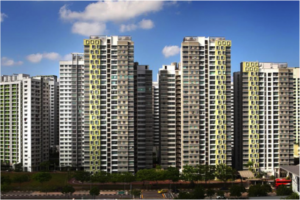President’s Message
Message 02/2018

Mr Lim Soon Heng, PE, FIMarEST.
Founder President
A PARADIGM SHIFT, CREATING SPACE FOR 6.9 MILLION PEOPLE AND PROTECTING OUR MARINE BIO-DIVERSITY

By 2030, the population of Singapore according to the White Paper tabled in 2013 is expected to reach 6.9 million, an increase of slightly more than a million.
 The Ministry of National Development (MND) estimates Singapore needs an additional 56 sq. km of land. For this, based on an average water depth of -5 meters, finished level +5 and allowing 1 meter for consolidation we are looking at a sand volume of 616 million cubic meters or a mass of 1.11 billion tons. Current sand price is said to be about $80/ton. To reclaim 56 sq km, and protect the reclaimed area from erosion we could be looking at $100 billion allowing for the cost of funds during the consolidation period.
The Ministry of National Development (MND) estimates Singapore needs an additional 56 sq. km of land. For this, based on an average water depth of -5 meters, finished level +5 and allowing 1 meter for consolidation we are looking at a sand volume of 616 million cubic meters or a mass of 1.11 billion tons. Current sand price is said to be about $80/ton. To reclaim 56 sq km, and protect the reclaimed area from erosion we could be looking at $100 billion allowing for the cost of funds during the consolidation period.
Perhaps money is not a concern since our sovereign wealth fund is four times as large and the reclaimed area could fetch at least $150 billion in the open market by 2030.
However, we owe it to the next generation to investigate all other options. Savings of a few billions are possible given the high cost of sand and the huge area involved. Such savings could be used for healthcare, education; new MRT lines and very importantly increase the resilience of our energy supply chain.
In Singapore, we increase space: by building higher, by digging deeper and by reclamation. These three ways are increasingly costly to the taxpayer and damaging to the environment. I will elaborate why so in subsequent messages.
There is one other way. It has not been tried here on a large scale: the use of very large floating structures as foundation for buildings (or process plants, ports, airports or recreation ground and many more.) How large? Well, one major contractor is proposing an island 3000 meters in diameter, i.e. about seven sq. km. In the Netherlands, the Dutch are investigating the design of a 3 sq. km floating island. The State of Louisiana in the US has conceptualised a floating offshore transfer terminal complete with container cranes with a footprint of 2000 acres (about 8 sq km). The project including the mooring, breakwater, cranes and berthing facilities is estimated to cost US$ 10 billion (US $1,236/m2). It is worth noting that the floating transfer terminal is located in a hurricane prone area.
In 2017, a local contractor, GL E&C, delivered a grade 85 MPa concrete pontoon measuring 138 m x 48 m at a cost of USD 1150/sq. m. Fitted with wing walls it is used as a floating dock. It is now in service in a shipyard in Honolulu, Hawaii.
Cost aside, we should also be sensitive to the pockets of rich marine bio-diversity that has survived in the north and north east of the island such as Sungei Buloh and Chek Jawa. The coastal and offshore islets south of the island are denuded of the original mangroves and biodiversity.
In the last five decades or so, we have reclaimed 130 sq km. or 22% of the land area before we started. We have lost much of our wetlands. Another 56 sq km of reclamation may just be the tipping point.
The mining of sand also damages the ecology of coastal areas of the countries from which sand is mined. In many countries, it is now outlawed.
Concrete uses less sand per unit area than reclamation. As the concrete platform floats, it does little damage to the bio-marine system around it. Nor does its import come with foreign organisms that may be incompatible with the local ones.
In May 2015, addressing an audience of academics, professionals and students, Prime Minister Lee Hsien Loong envisioned a day when “floating pontoons will be cheaper than reclamation.” That day has arrived. There is no reason not to take this, the fourth option to space creation for Singapore.
Lim Soon Heng
26th April 2018